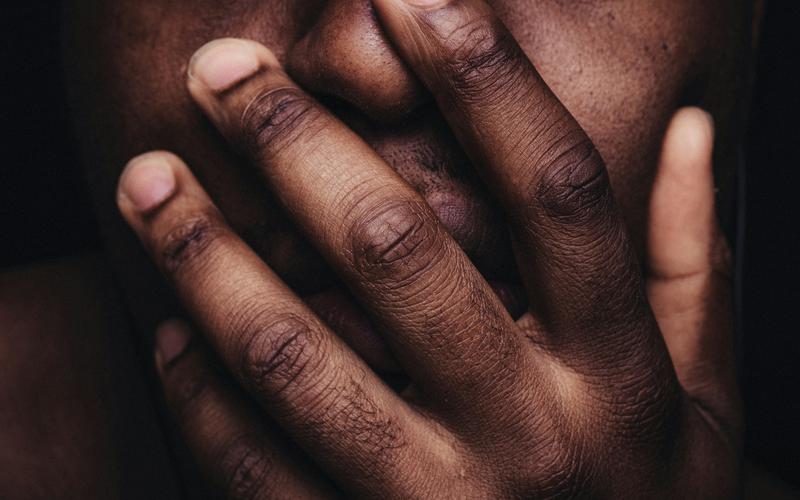by Nicole Gantz
September 17, 2024
Dark Days: Fugitive Essays by Roger Reeves; Graywolf Press; 240 pages; $26.00.
Roger Reeves’s first non-fiction collection of essays, Dark Days: Fugitive Essays, is a bold, introspective call for a new strategy to liberate Black Americans from the exploitive labor of the modern protest: to embrace ecstasy over impulsive empathy, exercise silence instead of boisterous protest. Effortlessly weaving accessibility with perspicaciousness, Reeves offers himself as both peer and professor, sharing stories about ancestry, fatherhood, and what it means to be a Black American in the 21st century. The author consciously restricts the scope of his essays to relationships that temporarily relieve us from claiming the burden of historical genocides (of which he does not limit to Black Americans), thus keeping readers from perseverating on the violent origins of this country. He asks us to focus on what it means to be free of imposed labor now. Drawing on his poetic roots, Reeves explicates poems, prose, and lyrics rhizomatically–like those of T.S. Eliot, Toni Morrison, and Outkast–using his dissection of language and discourse to build a non-linear narrative that seeks connection even as it breaks barriers.
In the essay “Through the Smoke, Through the Veil, Through the Wind,” Reeves reflects on his trip to the Mcleod Plantation in Charleston, SC. Though he doesn’t state as much, Reeves’s journey to the origins of contemporary Black American life is similar to Nora Zeale Hurston’s trip to Eatonville, Florida in Mules in Men, both writers setting out to experience a micro-chasm of their ancestry. But it’s the impetus of their different searches that sets these explorations apart. In her trip to the first entirely black city in the United States, Hurston collects and contextualizes African American folk tales as she consciously forges intimate relationships with her distant cousins. In contrast, Reeves was determined to suppress his emotions. He was there to dig up the bones of history, stir up its violence, then step back to watch it rise. However, his resolve to instigate, not participate, crumbles after examining the indented nevi of the plantation’s gin house: the fingerprints of enslaved children seared into the bricks of the building, birthmarks of the historical violence that sustains it. As he stares at the evidence of his ancestor’s trauma, Reeves compulsively searches for catharsis, thus negating his decision to put aside his feelings.
In reaching beyond the grave for comfort, Reeves attempts to sanctify the unredeemable. His confession prompts readers to confront a universal desire to exist in a contrived, purifying space–even when we are not welcome. Reeves acknowledges the humanity within the impulse to empathize when faced with tragedy, but in recognizing this truth, he also sets boundaries for empathetic expression. As a descendant of trafficked and enslaved Africans, Reeves inherits some level of rights to empathize with their pain, but he also implies that he has the right to decline admission into a cathartic space. In contrast, White Americans, upon recognizing the horrifying spectacle, are reminded to defer to the space’s ancestral occupants. Take your shoes off, know your place, for the “fetishization of origins is also the fetishization of death and annihilation." Under Reeves’s instruction, we understand–regardless of race–that immersing ourselves in sorrow through the weight of that brick romanticizes an act of obfuscation: When we shroud the proof of our country’s violent origins with unfiltered grief, our fingertips erode an artifact of American cruelty.
In “On Ecstasy,” Reeves connects an eagerness for pseudo-catharsis to a desperate search for a liberating form of ecstasy. However, as complacent capitalists we gorge ourselves on an inequity we condemn, declared in perpetuity, which preserves the historical exploitation of Black labor. In other words, a desire that shouts for solace is a continuation of suffering. This assertion is explored further in the essay “Letters to Michael Brown,” a series of four letters in which Reeves expresses concern over the country’s response–both protesters and defenders of the police–to Brown’s murder in 2014. These haunted messages to Brown–and, in effect, all Black victims of police brutality–question the efficacy of modern protests and the role of shocked sympathizers and grieving survivors. A vulnerable yet assertive series of questions, apologies, and admissions, these letters usher readers into another reflective space that encourages us to contemplate our participation, or lack thereof, in racial discourse in America.
As Reeves thoughtfully expounds on the value of modern protests and the roles of their participants, he makes a controversial statement: Cacophonous dissenters discourage opportunities for revolution. His essay “Singing into the Silence of the State” marks the more overt suggestions for implementing a strategy for progress. In it, he details his self-assigned responsibility to educate others on the role of the State in the systematic oppression and violent discarding of Black Americans–while simultaneously preparing his daughter for the same. In this reflection, Reeves recounts a gesture his young daughter made to a police officer during a protest after the murder of a Black man in Minneapolis. Surrounded by a crowd of thunderous chants, the little girl smiled and waved at a police officer–who then failed to acknowledge her. Though it presented like a welcome, Reeves found, upon reflection, ancestral significance in the moment. Under the threat of tear gas and rubber bullets designed just for them, Reeves argues his little girl unknowingly guards a secret: the ecstasy of “subversive silence." As he explains in “Notes on the Underground,” Black American freedom is “invisible,” and the silent act of “going underground” is a chance to reassess methods of escape on the surface; it’s a quiet space to reaffirm identity and a hushed meeting place to set goals for the future.
Perhaps this call for silence is why images, not words, bookend Dark Days. The first is a picture of a young Black boy before the first essay in the book, “The Angel of History.” As the stone-faced boy listens to the first Black president address the nation, Reeves imagines the boy is staring at the “dark days” of Black history, exercising his freedom to observe in silence. He ignores the spectacle of the scene, which Reeves suggests is an unconscious dismissal of the constant, boisterous appeal for equality that has become another burden for Black Americans to bear. It is the boy’s immense concentration that Reeves says prompted him to start listening instead of participating. His instinct to quiet himself is explored further in “Peace Be Still,” the essay Reeves sets apart from the others in the middle of the book. In it, he recounts his research into “hush harbors,” the carved-out spaces in the brush where enslaved Black folk would build sanctuaries to meet in secret, usually next to or above waters where their voices wouldn’t carry. Though they bravely clapped in spiritual communion, these rebels were also safely tucked away, inaudible to their captors, silently wading water toward a silent ecstasy they dared call freedom. Reeves recalls a similarly bold and beautiful emancipation in the book's final essay, “Something Good:” the release of the silent film Something Good in 1898–the same year, Reeves reminds us, of the Wilmington Massacre. The film unapologetically celebrates the first filmed kiss between a Black couple, a historical milestone that is both a private performance and a riotous demonstration of freedom.
With his remarkable commitment to emotionally distancing himself from the taxing burden of Black American labor, it is tempting to interpret Reeves’s praise for quiet reflection as a complete rejection of all forms of emotional labor, but the structure of Dark Days appears to resist this absolute. By highlighting the intimate connections between the American boy and his president, his family’s connection to “hushed harbors,” and the physicality between two Black lovers, Reeves does not end up eschewing all forms of Black labor. As he openly admits in “Intimate Freedoms, Intimate Futures,” Reeves has written a kind of sonnet to a silent, ecstatic form of labor, the labor of love. Though hesitant to admit the ultimate takeaway from his collection of essays, Reeves’s vulnerability here only cements the vitality of connection. It suggests that quiet, unapologetic joy has the potential to liberate the Black American soul from a trauma that remains and will likely persevere. In Dark Days, “subversive silence” is a call for a connection that strengthens beneath the chaos of modern protests to affirm a Black American’s right to rest. By keeping the gin house’s brick out of hand, we perform a silent, ecstatic labor of love that honors and respects the humanity that connects us all.
__________________________________________________________________________________________________________________________________________________________________________
__________________________________________________________________________________________________________________________________________________________________________
__________________________________________________________________________________________________________________________________________________________________________
Ecstatic Silence in Roger Reeves’s Dark Days: Fugitive Essays and the Modern Protest
NONFICTION REVIEW
Image by Nsey Benajah from Unsplash
Nicole Gantz is a writer and literary critic from Charlotte, North Carolina. She received her Masters in English Literature at the University of North Carolina at Charlotte. Her work has been published in L'Esprit Literary Review, and another critical essay will be published in Journal of Modern Literature later this year.
__________________________________________________________________________________________________________________________________________________________________________
__________________________________________________________________________________________________________________________________________________________________________
© 2024 Iron Oak Editions
Stay Connected to Our Literary Community. Subscribe to Our Newsletter




